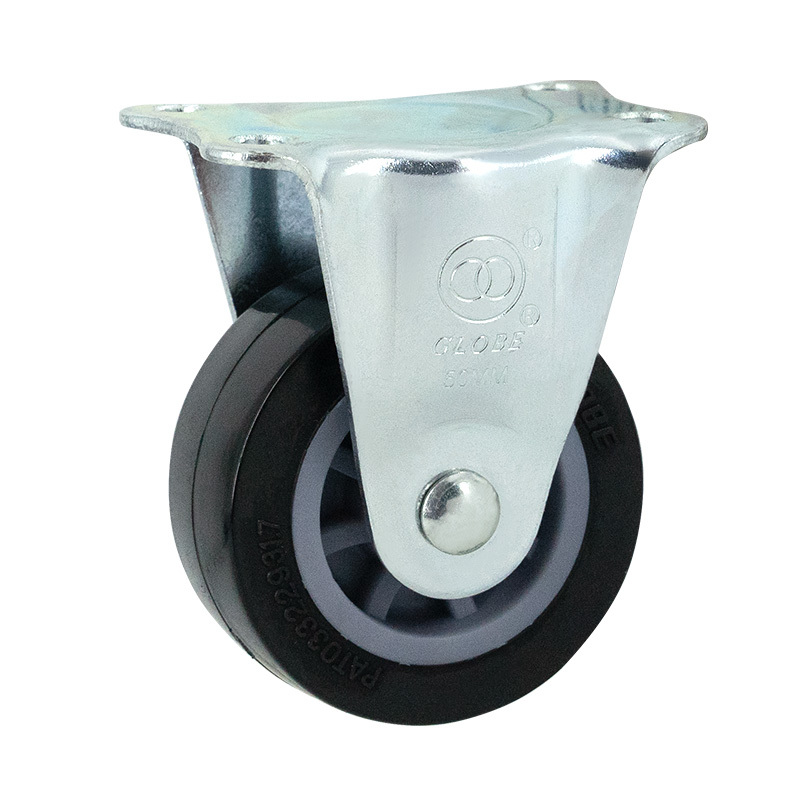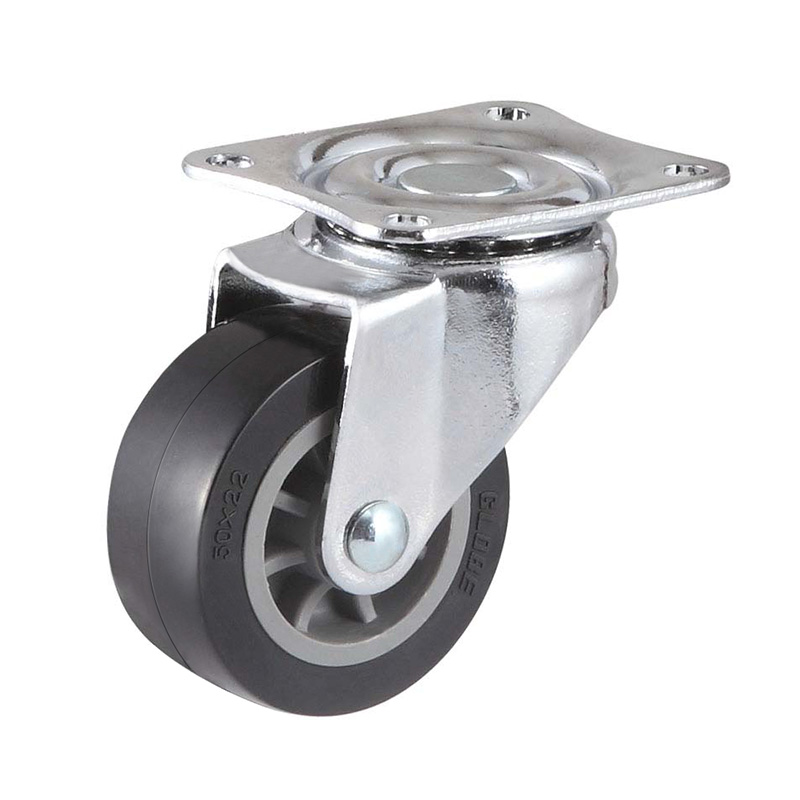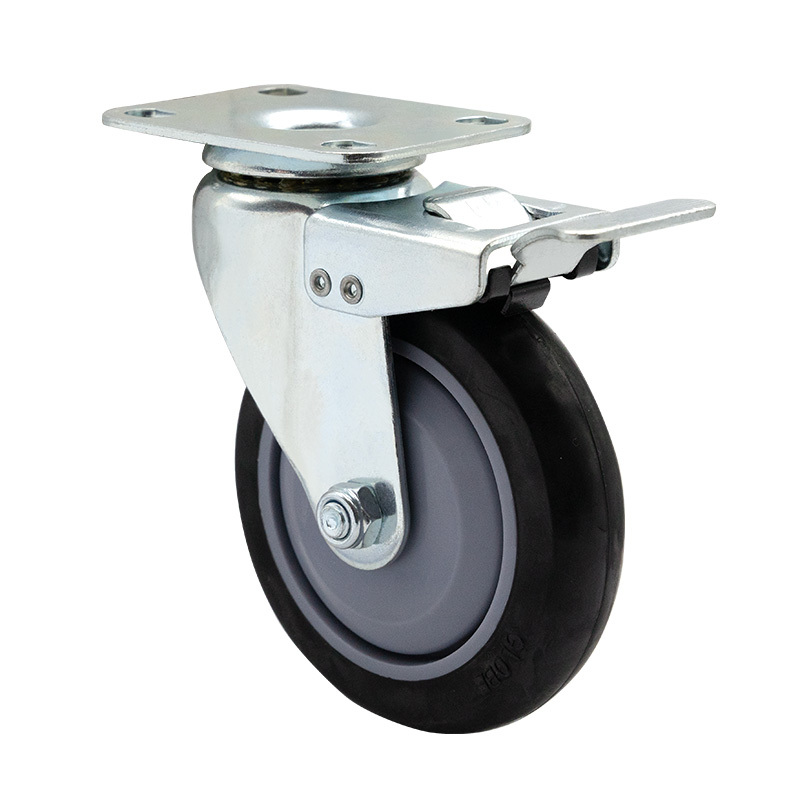Caster Classification and Application: A Detailed Analysis of Fixed Casters, Swivel Casters, and Brake Casters
Time:Apr 29,2025
Classification and Application of Casters: A Detailed Analysis of Fixed Casters, Swivel Casters, and Brake Casters
In the logistics and handling industries, casters are critical components. There is a wide variety of types, with fixed casters, swivel casters, and brake casters being the most common and important.
I. Fixed Casters: Ensuring Stability and Security
A fixed caster is a non-rotating caster, designed for equipment or goods that need to remain stable in a specific location. Its structure is relatively simple, consisting of a wheel and a bracket, with the wheel firmly fixed to the bracket and unable to rotate. 
The main applications of fixed casters are as follows:
(1) Large Machinery Equipment
For example, machine tools and printing presses. These pieces of equipment require high stability and precision during operation. Fixed casters ensure they remain stable during operation, preventing precision deviations or equipment damage caused by movement.
(2) Logistics and Warehousing Equipment
In the logistics and warehousing industry, racking and pallets need to be fixed in place to ensure the safe and stable storage of goods. Using fixed casters effectively prevents racking or pallets from accidentally moving when storing goods, thus preventing goods from tipping over or being damaged.
(3) Public Facilities
Streetlights and billboards need to be firmly fixed to the ground to ensure stability and safety during use. Fixed casters provide reliable support for these facilities, preventing them from tipping over or shifting due to external forces, ensuring public safety.
II. Swivel Casters: Representing Flexibility and Convenience
A swivel caster is a caster capable of 360° omni-directional steering. Its structure is relatively complex, consisting of a wheel, bracket, and connecting shaft. The wheel is connected to the bracket via a shaft and can rotate freely.

The main applications of swivel casters are as follows:
(1) Medical Devices
Hospital beds and medical equipment often need to be moved or repositioned to meet the needs of patient treatment and care. The flexibility of swivel casters allows these devices to be easily moved between different areas such as wards, operating rooms, and examination rooms, improving the efficiency and convenience of medical work.
(2) Industrial Equipment
In industrial production, some machine tools and printing presses need to be repositioned according to production processes or requirements. The use of swivel casters facilitates the movement and relocation of equipment, thus improving production efficiency and equipment utilization to meet changing production needs.
(3) Logistics and Transportation Equipment
Forklifts, trailers, and other logistics and transportation equipment need flexible mobility to handle various complex scenarios during loading, unloading, and transportation. Swivel casters enable these devices to maneuver in narrow aisles, warehouse corners, or on uneven ground, easily completing cargo handling tasks and improving the efficiency and flexibility of logistics and transportation.
III. Brake Casters
III. Brake Casters: The Key to Safety and Control
A brake caster is a caster equipped with a braking device. Its structure is relatively complex, consisting of a wheel, a braking device, and a bracket. The braking device can effectively control the rotation of the wheel, thus stopping or restricting the movement of equipment or goods.

The main applications of brake casters are as follows:
(1) Industrial Equipment
Pressing machines and forging machines require high stability and safety during operation. Brake casters provide reliable braking functionality during equipment operation, preventing accidental movement or sliding, ensuring operator safety and stable equipment operation.
(2) Logistics and Transportation Equipment
During logistics and transportation, forklifts, trailers, and other equipment need to stop or restrict movement at any time during loading and unloading or driving to ensure the safety of goods. The use of brake casters ensures that these devices can brake quickly when needed, preventing goods from tipping over or being damaged due to equipment movement, improving the safety and reliability of logistics and transportation.
(3) Public Facilities
Elevators and escalators require stability and safety during operation. Brake casters can provide the necessary braking function for these facilities, allowing them to quickly stop in emergencies, preventing accidents and ensuring passenger safety.
In short, fixed casters, swivel casters, and brake casters each have their own characteristics and are suitable for different applications. Selecting the appropriate caster type based on the specific needs of the equipment or goods can effectively improve work efficiency, safety, and stability.
Previous article
Next article
Previous article
Next article



